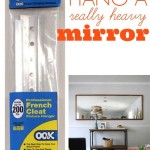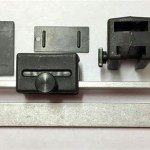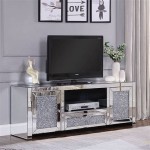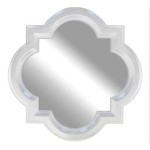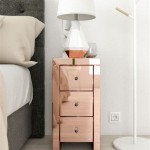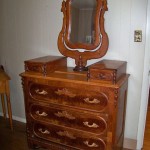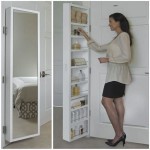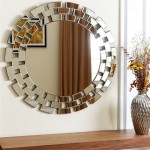Hide a TV Behind a Mirror: A Comprehensive Guide
Concealing a television behind a mirror offers a sleek, modern solution for integrating technology seamlessly into interior design. This approach allows homeowners to enjoy their favorite programs without sacrificing the aesthetic appeal of a room. This article explores the different methods and considerations involved in achieving this sophisticated setup.
Types of Mirrored TV Solutions
Several options exist for hiding a television behind a mirror. Understanding the differences between these methods helps determine the best fit for individual needs and budgets.
Key Points:
- Two-way Mirrors: These specialized mirrors partially reflect light while allowing some light to pass through, revealing the television screen behind them. The clarity of the reflection and the visibility of the screen depend on the mirror's specific properties.
- Mirror TV Units: These pre-built units combine a TV and a two-way mirror within a single frame. They offer a convenient, all-in-one solution, requiring less DIY assembly.
- DIY Solutions: Combining a standard TV with a separate two-way mirror allows for greater customization in terms of size and frame style. However, this approach requires more planning and execution.
Choosing the Right Mirror
The mirror selection is crucial for optimal viewing experience and aesthetic appeal. Several factors contribute to the effectiveness of a mirror TV setup.
Key Points:
- Mirror Transmittance: This refers to the percentage of light that passes through the mirror. A higher transmittance results in a clearer television picture but a less reflective mirror surface.
- Mirror Reflectance: This indicates the percentage of light reflected by the mirror. A higher reflectance creates a better mirror image but can diminish the TV's visibility.
- Mirror Tint: Some two-way mirrors have a slight tint, which can affect the color accuracy of the television picture. Neutral tints are generally preferred for minimal color distortion.
- Mirror Size and Shape: The mirror should be large enough to completely conceal the television while complementing the room's dimensions and style.
Television Selection and Placement
Choosing the right television and positioning it correctly behind the mirror are essential for optimal performance and longevity of the setup.
Key Points:
- Brightness and Contrast: A television with high brightness and contrast settings is essential for overcoming the light absorption of the two-way mirror.
- Backlighting: Edge-lit TVs tend to work better than backlit TVs, as they distribute light more evenly across the screen, improving visibility through the mirror.
- Ventilation: Ensure adequate ventilation around the television to prevent overheating. The enclosed space behind the mirror can trap heat, potentially damaging the TV's components.
- Distance from Mirror: The television should be positioned a few inches behind the mirror to allow for proper ventilation and prevent image distortion. The optimal distance depends on the specific mirror and TV combination.
Installation Considerations
Proper installation is critical for both functionality and safety. Whether opting for a pre-built unit or a DIY approach, careful planning and execution are crucial.
Key Points:
- Wall Mounting: Ensure the wall can support the combined weight of the television and the mirror. Use appropriate mounting hardware and follow the manufacturer's instructions.
- Wiring and Connections: Plan the cable routing for power and video signals before installation. Conceal wires within the wall or use cable management solutions for a clean and organized look.
- Framing: Choose a frame that complements both the mirror and the surrounding décor. The frame should be deep enough to accommodate both the TV and the necessary clearance behind the mirror.
Maintaining a Mirror TV
Maintaining the mirror and television ensures optimal performance and longevity of the setup.
Key Points:
- Cleaning: Use a suitable glass cleaner for the mirror surface. Avoid abrasive cleaners that can scratch the mirror. Clean the television screen according to the manufacturer's instructions.
- Dusting: Regularly dust the area behind the mirror to prevent dust buildup on the television and other components. This helps maintain optimal picture quality and prevent overheating.
- Inspection: Periodically inspect the wiring and connections to ensure everything is secure and functioning correctly.
Alternative Approaches
While two-way mirrors offer a popular solution, other methods can achieve a similar effect.
Key Points:
- Projector Screens: A retractable projector screen hidden behind a motorized artwork or mirror can provide a large viewing area when needed while remaining concealed when not in use.
- Sliding Panels: Hiding a television behind sliding panels or barn doors offers another option for concealing the screen while providing flexibility in terms of access.

Tv Behind A Mirror Living Room In Bedroom

22 Modern Ideas To Hide Tvs Behind Hinged Or Sliding Doors House Interior Decor Home

The Living Room Tv As We Know It Is Over Laurel Home

How To Make A Mirror Tv Step By Instructions

Samsung Mirror Tv Complete Guide For 2024 Models

29 Creative Modern Ways To Hide A Tv Digsdigs

Stimuli Sight Sound Llc Hide Tv Over Fireplace Decor

Television Framed Frameless Dielectric Mirror Tv

Clever And Diyable Ways To Hide A Flat Screen Tv Addicted 2 Decorating

Tv Coverups Hide Your With Art Or A Frame Mirror

